Table of contents of the article
ToggleThe almond bark beetle is a pest that attacks the bark of almond trees, causing significant damage to the trees. This article from the “WORLD OF PLANTS” website reviews the most important means of prevention and control of this beetle.
Symptoms of the boll bark beetle
- Scientific name : Ruguloscolytus amygdali Guerin
- the family : coleoptera
- Note a large number of small round holes on the branches and stems of infected trees.
- The presence of a resinous substance above the entry and exit hole of adult insects.
- Complete drying of branches and small trees (when the infestation is severe)
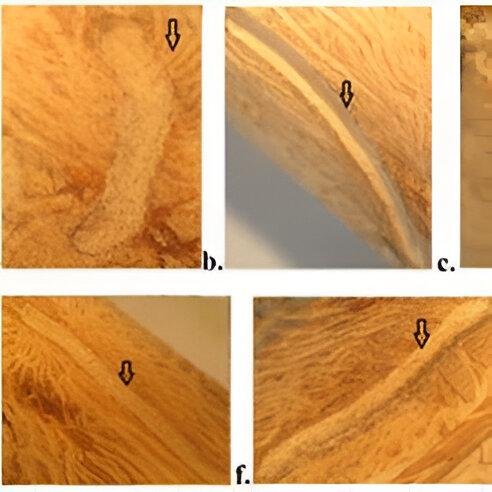
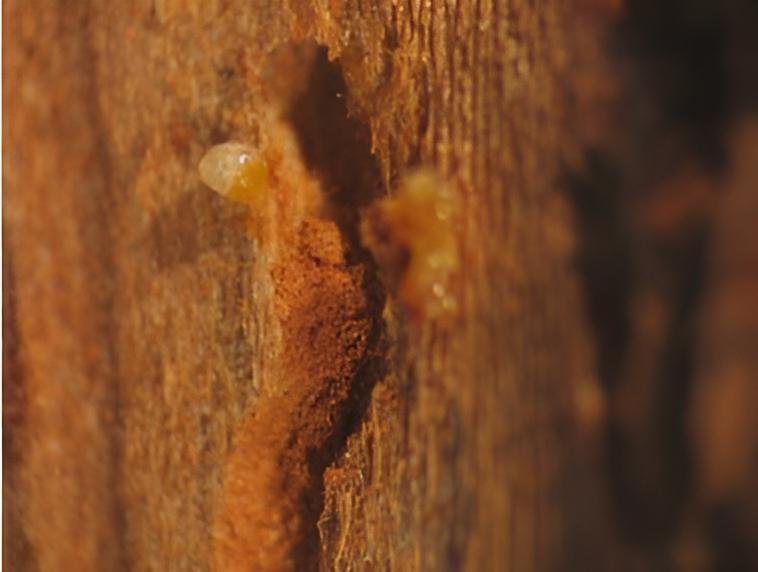
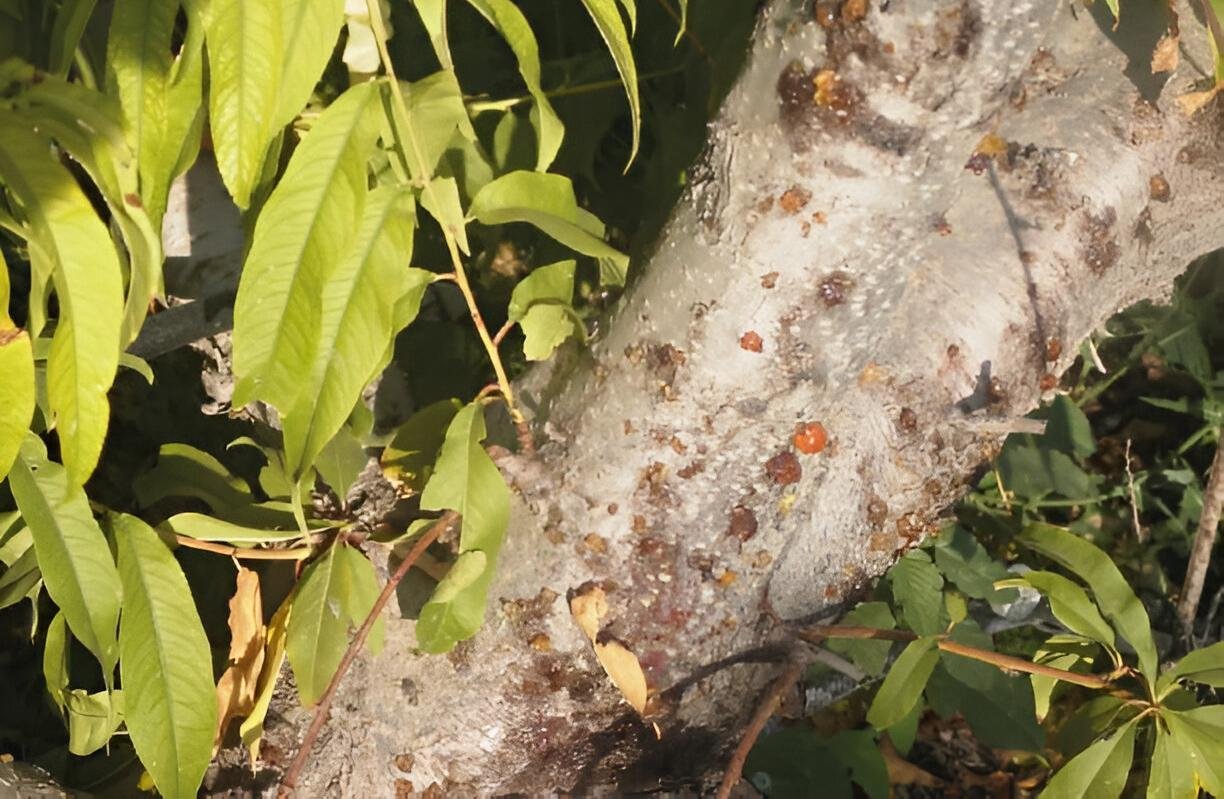
Description of the tonsil bark beetle
The adult insect is small, 3 mm long, and has a cylindrical shape. The color of its head and chest is black, while the antennae are brown. There are numerous pits on the chest.
The larva is 4 mm long, white in colour, and has no legs.
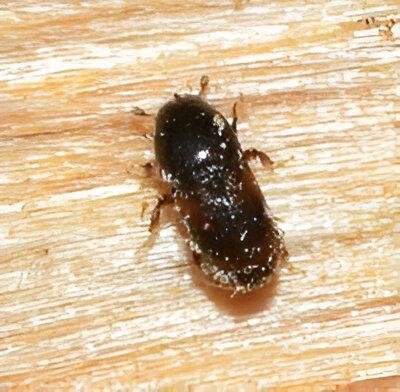
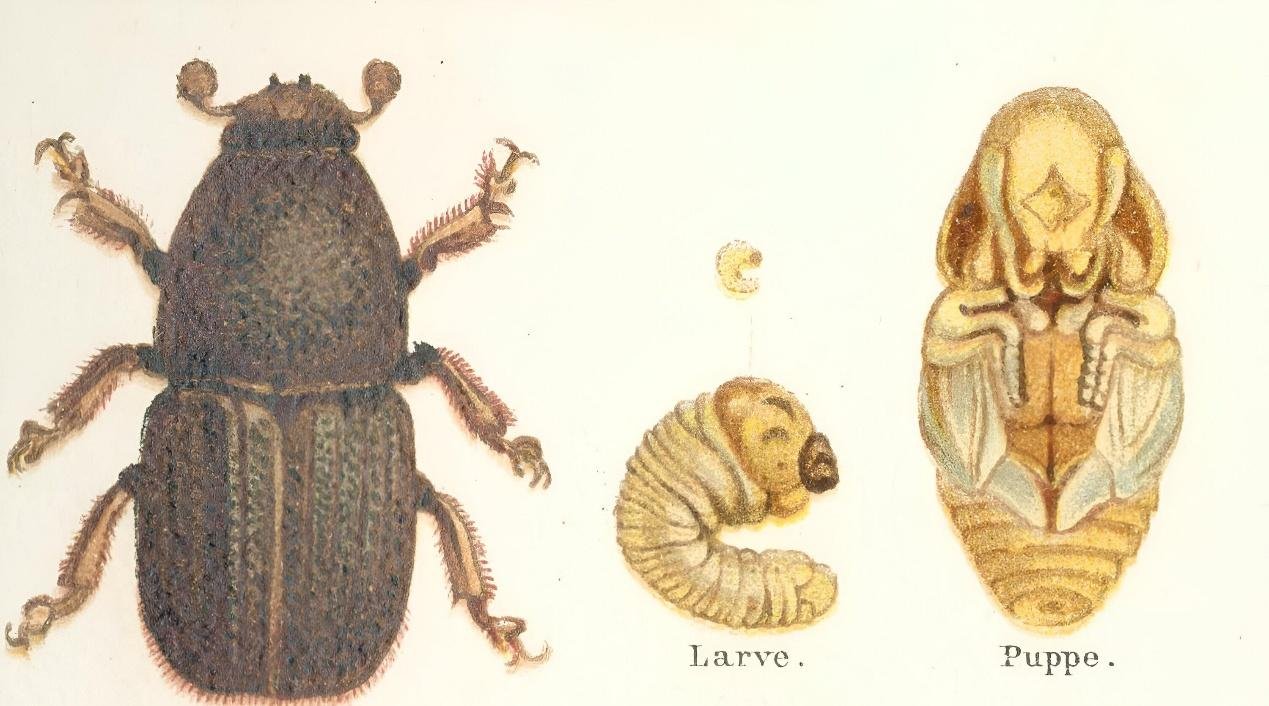
Causes of the tonsil bark beetle
- Climate change affects the distribution and population dynamics of many insect pests.
- Weak trees or infected with fungal diseases.
- Poor soil conditions such as high humidity.
Suitable conditions for the spread of the almond bark beetle
- The temperature rises in summer and decreases in winter.
- Neglecting pruning.
Development cycle of the almond bark beetle
- They emerge at temperatures above 18°C to form the winter generation. After a period of cold weather, the air temperature begins to rise, and all the adult beetles that have accumulated in the bark to wait for suitable flight conditions will suddenly emerge and produce the spring generation during the months of March and April. The spring generation is followed by the summer generation, which begins in May to June.
- The insect has three generations annually.
- The female digs a primary groove in which she lays eggs. The eggs hatch into worm larvae that dig secondary tunnels under the bark, vertical or inclined to the mother’s tunnel. The tunnels do not intersect, as is the case in the apple bark weevil.
Losses of the spread of the tonsil bark beetle
- It can affect neighboring economic crops.
- It weakens the trees and attracts other borer pests, the most important of which are capnoids
Strategy for combating the almond bark beetle
1. Preventive measures to prevent the occurrence of the disease
- Locate trees containing overwintering larvae and destroy them before the first generation begins to emerge.
- Branches after cutting should be burned immediately, because if left on the plot, adults can get out and attack the nearest trees. If these branches are saved for firewood or other uses, they must be placed in plastic bags and in closed places. In areas with problems of adjacent abandoned plots, extreme caution must be taken against the attack of this pest.
- Good service for an apricot orchard is regular irrigation
- Pruning infected branches, cutting down weak and dead trees and burning them.
2. Chemical and organic control recommendations
- Organic control: Coating tree branches with a solution consisting of the pesticide cyclose benzene and spent olive oil (after using it for various purposes) in a ratio of 6:1 during the bud dormancy season.
- Chemical control: Spraying the stem and branches with dieldrin or lindane during the active season of the insect.
In conclusion, we would like to note that we, at the world of plants website, offer you all the necessary services in the world of plants, we provide all farmers and those interested in plants with three main services::-
- Artificial intelligence consulting service to help you identify diseases that affect plants and how to deal with them.
- Blog about plants, plant diseases and care of various crops ... You are currently browsing one of her articles right now.
- An application that provides agricultural consultations to clients, as well as a service for imaging diseases and knowing their treatment for free – Click to download the Android version from Google Play Store، Click to download the IOS version from the Apple App Store.
References
- ZEIRI, Asma; BRAHAM, Mohamad; BRAHAM, Mohamad. The effects of Climatic Variability and Change on the activity of the Almond bark beetle Scolytus amygdali in the coastal zone of Mahdia. Revue des Regions Arides, 2014, 35: 1833-1837.
- Zeiri, A., Ayberk, H., Buhroo, A. A., Braham, M., & Braham, M. (2015). Observations on the overwintering forms of Scolytus Amygdali (Coleoptera: Curculionidae) in Tunisia. Munis Entomology and Zoology,(10), 209-214
- Blachowsky 1962. Traite d´Entomologie (t, I, vol. 2) Talhouk AS1968. Contribución al conocimiento de las plagas almendro en los países del mediterraneo.
- OBSERVATIONS ON THE OVERWINTERING FORMS OF SCOLYTUS AMYGDALI (COLEOPTERA: CURCULIONIDAE) IN TUNISIA – researchgate
- Evaluation de l’effet insecticide de l’huile essentielle de Citrus aurantium (Rutacées) sur la dynamique des populations de Parlatoria ziziphi Lucas. (Homoptera: Disapididae). – researchgate
- Barrenillo de los frutales, Ruguloscolytus (Scolytus) amygdali Guerin – Plagas del Almendro – agroes




